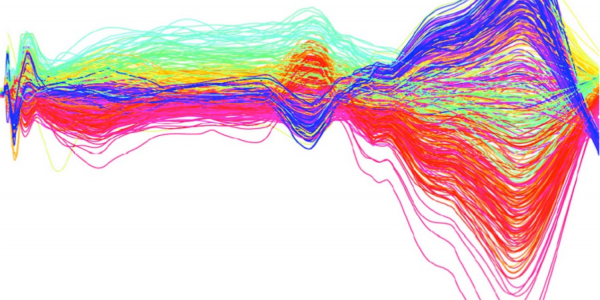If you haven’t personally been affected by cancer, it’s likely you know someone who has.
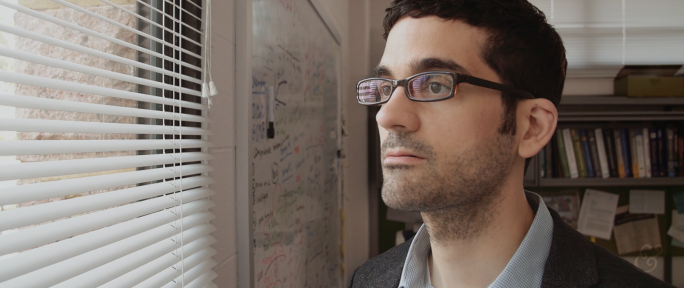
In the United States alone, 2015 saw an estimated 1,658,370 new cancer cases and 589,430 deaths. These statistics emphasize a troubling reality – though cancer is more treatable with modern medicine, a cure still evades us.
Cancer was long thought of as a proliferation disorder, where cells rapidly and uncontrollably reproduce. Current evidence, however, also firmly links cancer to metabolic dysregulation. This means that metabolism, the chemical processes occurring within cells to sustain life, changes drastically in a cancer cell. While the extent of metabolic dysregulation differs for each type of cancer cell, all cancer cells do have one thing in common: the Warburg effect.
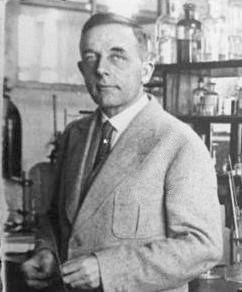
Discovered in the early 1900s by prominent biochemist Otto Warburg, the Warburg effect is the result of cancer cells opting to use different pathways for nutrients and energy than those used by healthy cells. This process stems from cells’ big picture needs: healthy cells need fuel to complete their functions and keep their biological system energized, while cancer cells are more dependent on their fuel to help themselves reproduce rapidly. That is to say, when a cell becomes cancerous it begins to divert its energy sources to different pathways.
This landmark realization opened the door to connecting metabolism and cancer. Yet over 100 years after this discovery, researchers have still not identified what exactly induces the Warburg effect or determined the full scope of its consequences. In fact, following the discovery of the major metabolic pathways in the early 20th century, scientists predominantly believed that the study of metabolism had reached a dead end. The field has regained momentum and prominence over the past decade, but only very recently has its usefulness in cancer research been understood. Today a handful of scientists, including chemist Gary Patti, are reviving metabolism by turning to the study of metabolomics.
Developing New Technologies
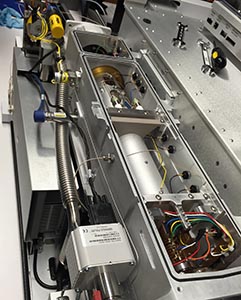
As part of the global scientific effort to seek knowledge about, and eventually, a cure for cancer, Patti stands out for his work in analyzing the intricate inner workings of cells. He has built his research around metabolomics technologies that allow small biological molecules (metabolites) to be measured. Patti uses instruments called mass spectrometers to detect metabolites extracted from biological samples, where individual metabolites are ‘weighed’ and characterized by their specific masses. The mass spectrometers are capable of capturing all the metabolites in the cell (the metabolome) so that metabolic profiles can be generated for each cell type, and healthy and diseased cells can be compared.
While the general technique of metabolomics is becoming increasingly popular and more accessible, the development of new technologies to analyze the entire metabolome of a sample remains complex. To capture such a large amount of data a method called untargeted metabolomics must be implemented. During untargeted experiments, researchers do not intentionally look for specific metabolites. Instead, they sift through massive data sets to create a metabolic profile. These experiments are formidable, and today only a handful of labs in the world are taking on the challenge of performing and optimizing methods for untargeted metabolomics. Untargeted techniques require a combination of technical skill and the ability to obtain quality data, as well as the biochemical knowledge to properly design experiments to be open-ended without being directionless.
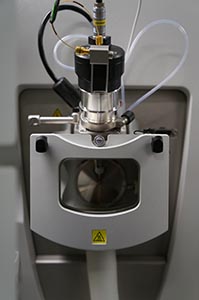
“It’s really important to be discovery driven,” Patti says. “When you’re doing untargeted experiments, the ability to think creatively and be able to throw out what seems dogmatic or take a turn from what is dogmatic is really critical.”
Adding to the complexity is the fact that not all mass spectrometers are alike. In order to perform these pioneering experiments, Patti uses five different instruments. Each one has a specific function; some of the instruments are capable of detecting even the smallest amount of metabolite, while others are less sensitive but can measure metabolite mass with astonishing precision. Often a single experiment will involve the use of at least two different instruments, though more technologically challenging experiments may require even more. On a typical day in the lab instruments are in constant use, and Patti envisions the lab expanding in the near future.
“The instruments are getting more and more sensitive and continuing to detect more and more metabolites,” he says. “To be able to continue doing the work that we’re doing, which is to really understand the entire metabolome and map absolutely everything that’s going in a cancer cell, it’s really important that we stay on top of the instrumentation. Ultimately, we think that we will have the instrument capability to watch cells ‘talk’ to each other in samples by using metabolomics.”
Moving Forward
Patti also sees the work moving beyond the laboratory bench and towards the clinic so that research is more directly applicable. Currently Patti grows cells in vitro to provide the biological samples necessary for the lab to probe fundamental questions in metabolism. “But one of the concerns is always, does our work in cell culture recapitulate what’s happening in patients?” Patti points out. “So a lot of the technologies that we’re doing are aimed at trying to translate metabolomics to patient samples from cell culture, trying to make the system increasingly complex so that it more closely mimics what’s actually happening in the body.”
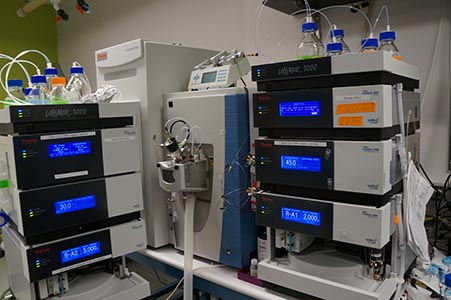
With these advanced technologies, Patti and his lab can examine healthy tissue in comparison to cancerous tissue, to see how metabolic traffic changes between the two. By understanding how cancer cells use nutrients and pathways differently than healthy cells do, researchers are then able to examine these differences as potential targets for cancer treatment.
Though cancer research is a crowded field, Patti has found additional ways to make his lab distinctive. He now frequently incorporates a second process into his platform, called stable isotope labeling.
All periodic elements have naturally existing ‘siblings’: elements that are structurally identical but differ only by their number of neutrons. These sibling elements, called isotopes, have slightly different masses and can therefore be identified via mass spectrometry. While naturally occurring isotopes are usually very rare, chemical manufacturers can manipulate compounds to create them.
When these isotopes are fed to healthy and cancerous cells, metabolites become isotopically ‘labeled.’ Patti can then visualize metabolic traffic as if each labeled metabolite were highlighted. This platform allows Patti’s lab to trace specific metabolites to see differences between healthy and cancerous cells. Using this unique method has allowed Patti to delve more deeply into the metabolic specificities of a cancer cell.
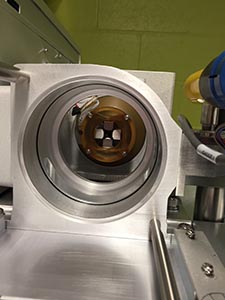
Patti’s techniques and discoveries have already led to numerous awards and honors, including being named an Alfred Sloan Fellow and a Pew Scholar. But amidst all the excitement of the current work, he keeps his mind on an ambitious end goal. “I think the ultimate research goal is to reach an up-to-date, comprehensive version of metabolism,” he says. “That will shed a lot of light on cancer and disease, and it will provide new therapeutic targets. It’s exciting to think about.”
“It’s fascinating to me to try to understand both the mechanism of health and the mechanism of disease,” Patti says. “It’s a giant puzzle, and just like when you start a crossword puzzle and can’t put it down, I started the crossword puzzle about 15 years ago and now I’m hooked. Science is the crossword puzzle that you never finish. It’s a lifelong mission.”
Susan Gelman is a graduate student in the chemistry department at Washington University in St. Louis, with an emphasis on biological chemistry. Gelman's research in the Patti lab focuses on metabolomics and cancer metabolism. For more on the lab's work, see "Increasing Probability for Discovery" in Washington magazine or the following video.

